We never know when our hard drive will stop working, and we lose important data. It is a high risk of data loss during a cyber attack or natural disaster. Therefore, it is always a good idea to perform a regular backup to protect your important data against system failure and malware attacks.

However, sometimes, you may forget to create a backup of your valuable data. In such a case, it can be a serious problem if something goes wrong with your computer. To avoid such circumstances, you can set up automatic Windows Backups at a scheduled time. This way, it will help to avoid the loss of important files and documents from unexpected hazards.
How to create Automatic File Backup on Windows 11/10
To automatically backup files & folders on a Windows computer, you have the following options:
- Back up files to OneDrive
- File backup with File History
- Backup file using Windows Backup & Restore Tool
- Using free software.
Let’s see all these methods one by one in the below section.
1] Create automatic file backup using OneDrive
Creating automatic file backup using OneDrive is probably the best way to keep your data safe because it backs up the files as soon as you sign in to OneDrive. Since this system stores the files in the cloud, so there is no need to worry about any unexpected failure. It allows users to access their files across any device. Here are the steps you can use to create automatic file backup on Windows 10 using OneDrive:
- To get started, open the Settings app first.
- Click on the Update & Security category
- Select the Backup tab from the left pane.
- Move to the right page and click on the Back up files button that is available under Back up files to OneDrive.
- Select the folders you want to backup in the cloud, and remove those ones you don’t want to backup.
- On the next page, click the Start backup button to start the procedure.
After performing the above steps, files in your Desktop, Documents, and Pictures folders will be saved to OneDrive. These folders are now protected and accessible on any device.
Read: Make Windows automatically backup Registry to RegBack folder.
2] Create automatic file backup using File History
File History is an inbuilt feature that allows users to create automatic file backups on Windows 11/10. File History allows the users to back up their files in an external or cloud drive at different intervals of time. To create automatic file backup using File History, follow the below suggestions:
Press the Windows key + I to open the Settings app.
Click on the Update & Security category and then select the Backup tab from the left pane.
Under the Back up using File History section, click on Add a drive button.
Now, choose the drive to store the backup files. Windows will use this drive for File History.
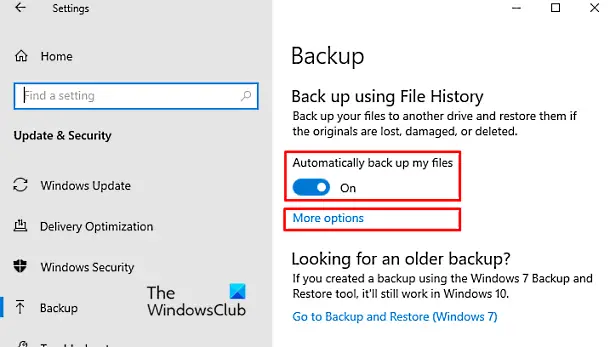
Then, turn on the toggle button under Automatically back up my files. This will back up your data to the drive automatically whenever you connect it to the system.
Below the toggle button, click on the “More options” link to set how frequently File History will back up.
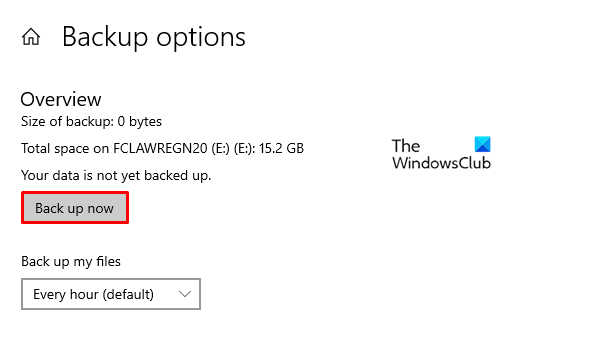
By default, it will back up the data every hour but if you want, you can increase or decrease the time period. Using the “Back up my files” drop-down menu, you will get the option to set the time interval for how often you want to create a backup.
Then use the Keep my backups drop-down menu to get the option to configure the time for how long you want to keep your backups. By default, it will keep your backups forever.
Under the section Back up these folders, tap on the Add a folder button in order to add one more folder to the backup. Then click on the Add a folder button, under Exclude these folders. This will exclude the files that you don’t want to back up.
You can stop the drive from storing backup files to change the backup storage location. To do this, click the Stop using drive option under the Back up to a different drive category.
After completion of the above steps, Windows 10 will start backing up your selected folders regularly.
Read: How to Backup & Restore Boot Configuration Data (BCD) file.
3] Create automatic file backup using Windows Backup & Restore Tool
Alternatively, you can use Windows Backup & Restore Tool to create a file backup to an external or removable drive. Follow the instructions given below to create automatic file backup on Windows 11/10 using Windows Backup:
To get it started, open the Control Panel. Make sure the “View by” is set as Category.
Now click on the System and Security option. On the next page, scroll down and select the Backup and Restore (Windows 7) button.
Next click on the Set up backup button, available under the Back up or restore your files section.
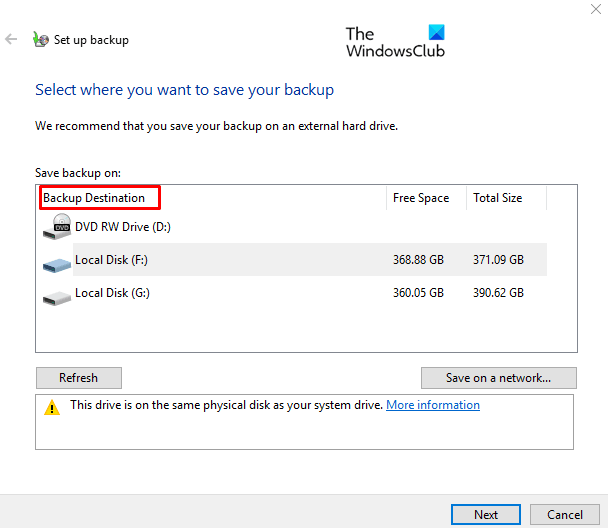
Under the Save backup on section, select the Backup Destination where you want your backup files to get stored.
You can also click on Save on a network to store your backup files on your local Network Attached Storage then click on the Next button.
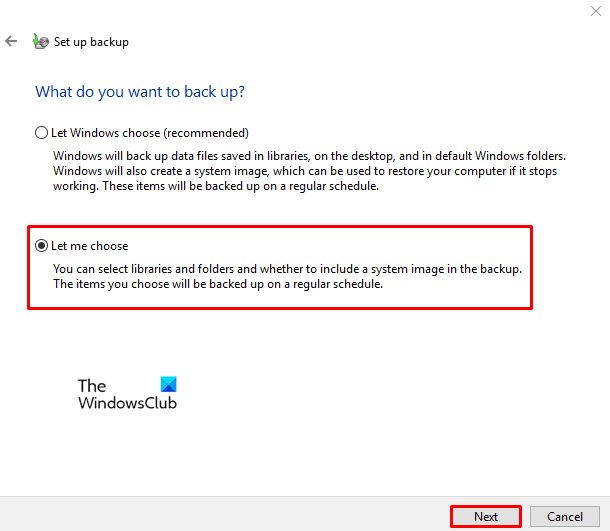
On the “Set up backup” page, Windows will ask you to choose the way to backup, check Let me choose checkbox, and then hit the Next button.
Under the section Computer, select the files and folders you want to backup. Then uncheck the box next to the Include a system image of drives option, and then hit the Next button.
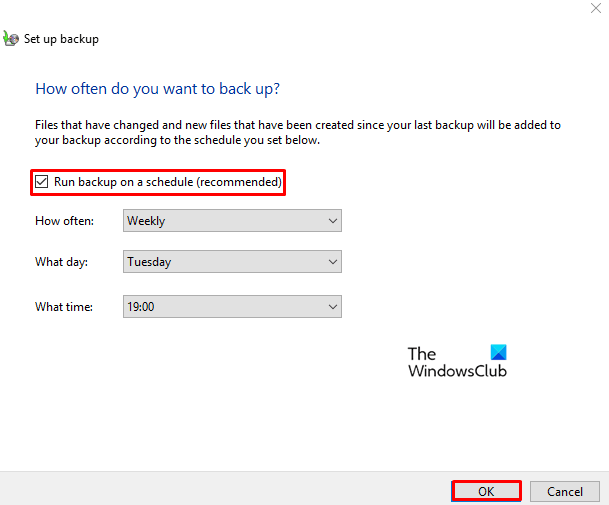
Now click on the Change schedule link. Set the time and check the box beside Run backup on a schedule button.
Click OK then select the Save settings and run backup option.
Read: What is File Level Backup? Why and When to use it?
4] Using free Backups software
You can also use third-party free Backup software to backup your files automatically.
PS: If you are looking for cloud options, you might want to check out these Free Online Backup Services.
We hope you find the post useful.
Also read: How to use Windows 11 Backup feature?